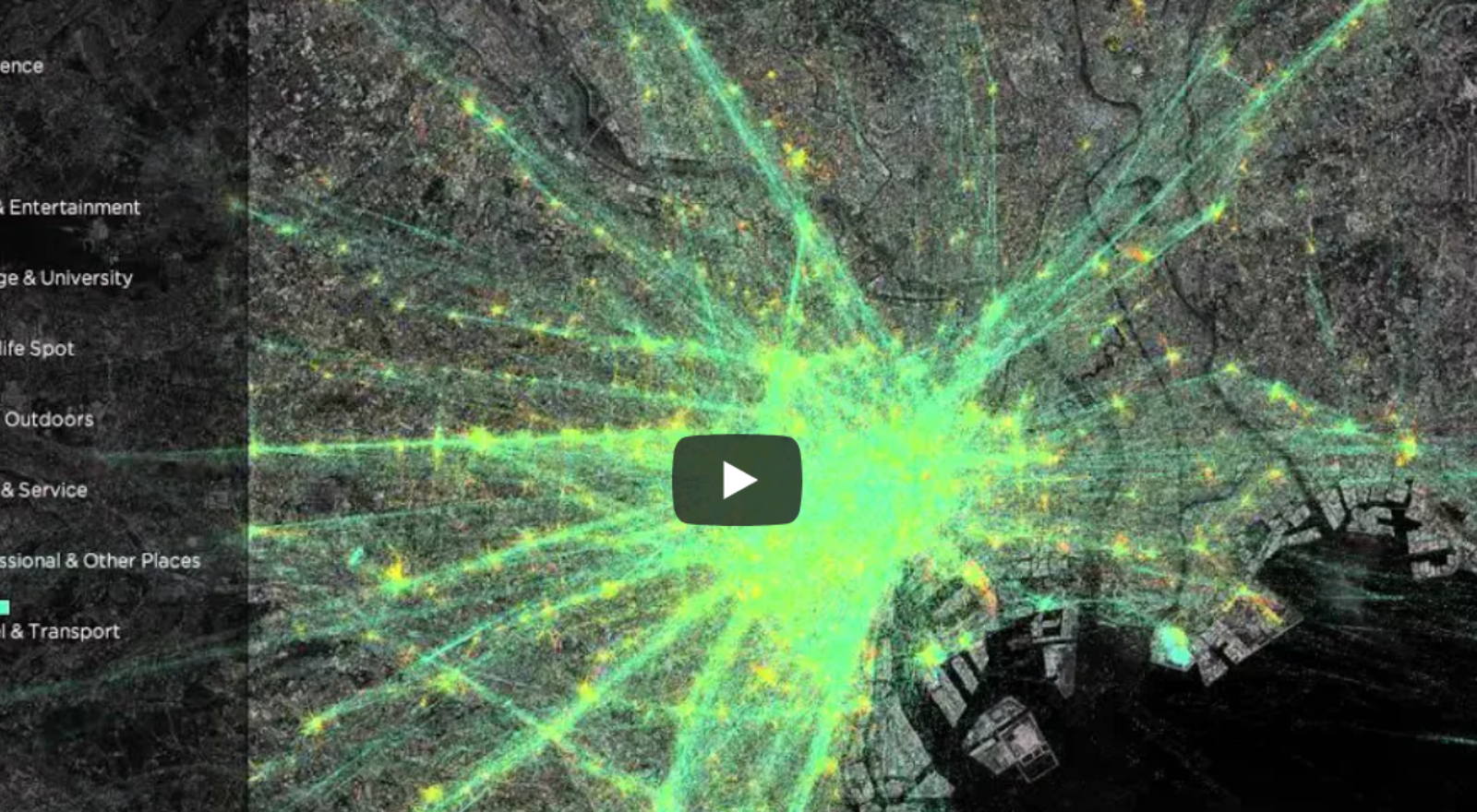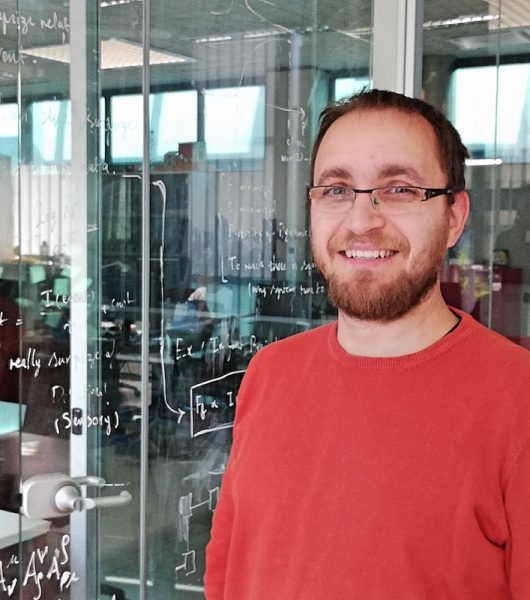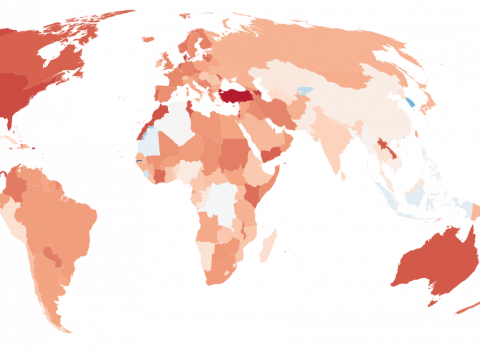Unraveling the hidden organisation of urban systems and their mobility flows
Published on EPJ Data Science the Open Access new scientific paper authored by the FBK - CoMuNe Lab researchers Riccardo Gallotti, Giulia Bertagnolli and Manlio De Domenico
Increasing evidence suggests that cities are complex systems, with structural and dynamical features responsible for a broad spectrum of emerging phenomena.
In their study, the researchers used a unique data set of human flows and coupled it with information on the underlying street network to study, simultaneously, the structural and functional organisation of 10 world megacities: Chicago, Istanbul, Jakarta, London, Los Angeles, Paris, Tokyo, Seoul, New York and Singapore.
They quantified the efficiency of flow exchange between areas of a city in terms of integration and segregation using well defined measures.
STEP 1: They used Foursquare check-ins to define a multilayer “activity aware” urban flow networks by decoupling the flows described by subsequent check-ins into layers of venues belonging to the same category.
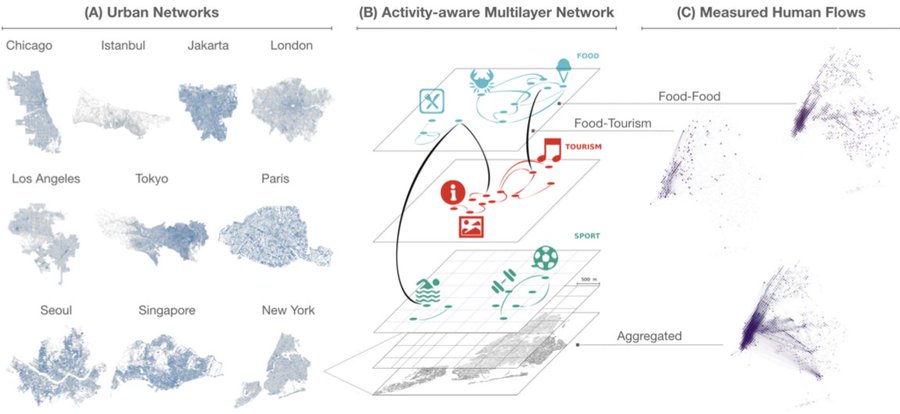 STEP 2: They then analysed these networks in term of Global Communication Efficiency (measuring integration) and Modularity (measuring segregation). They firstly compared the functional organisation estimated by mobility flows with the structural organisation given by the street network.
STEP 2: They then analysed these networks in term of Global Communication Efficiency (measuring integration) and Modularity (measuring segregation). They firstly compared the functional organisation estimated by mobility flows with the structural organisation given by the street network.
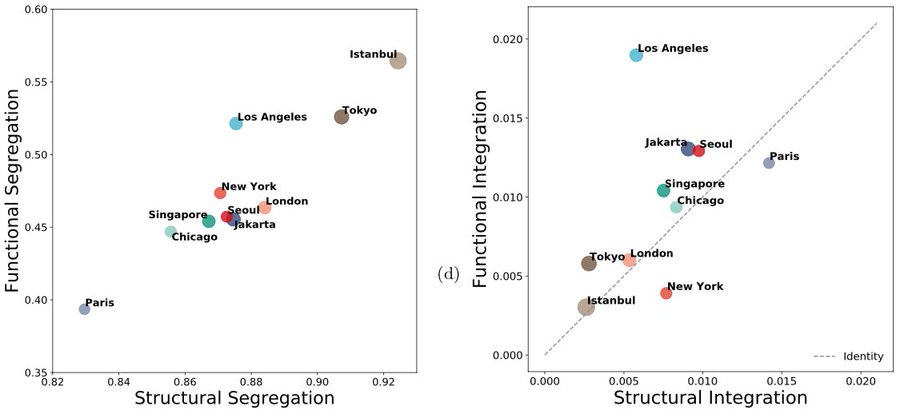
STEP 3: To orient themselves and understand what are the factors shaping the segregation-integration diagram of networks, they studied the behaviour of two fundamental null models for spatial networks.
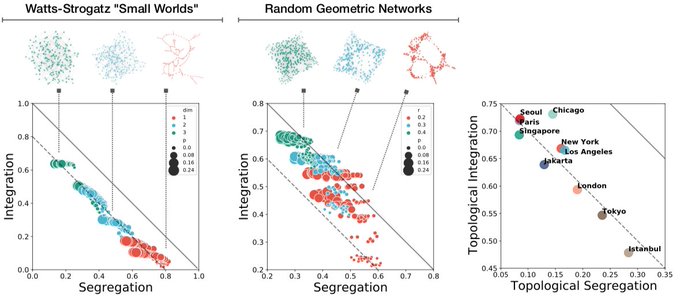
STEP 4: Then they investigated what are the dominant causes for the segregation and integration of urban flow networks. They found that both the city size and the hierarchical organisation of flows play a crucial role in shaping the urban system.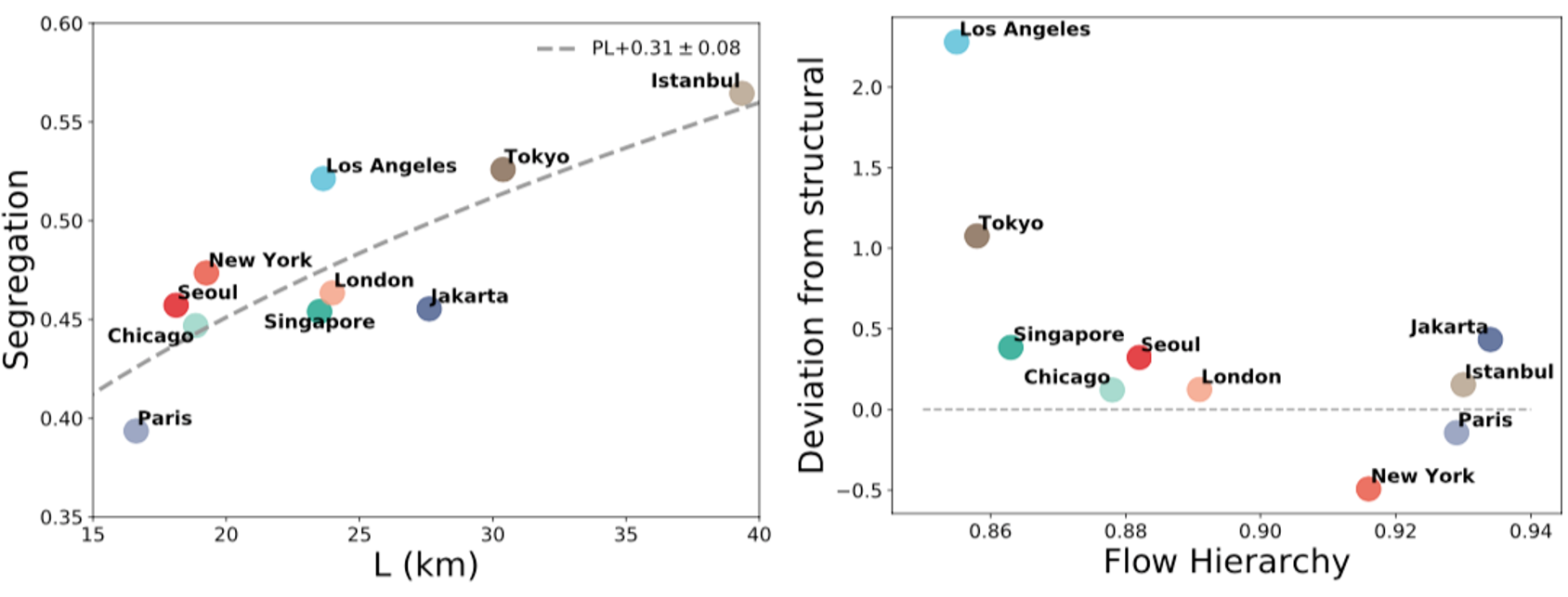 STEP 5: The multilayer approach allowed them to test the variation in integration and segregation when removing one category of venues. This analysis identifies types of activities (food, leisure, commercial) which removal does not hinder the information flow though a city.
STEP 5: The multilayer approach allowed them to test the variation in integration and segregation when removing one category of venues. This analysis identifies types of activities (food, leisure, commercial) which removal does not hinder the information flow though a city.
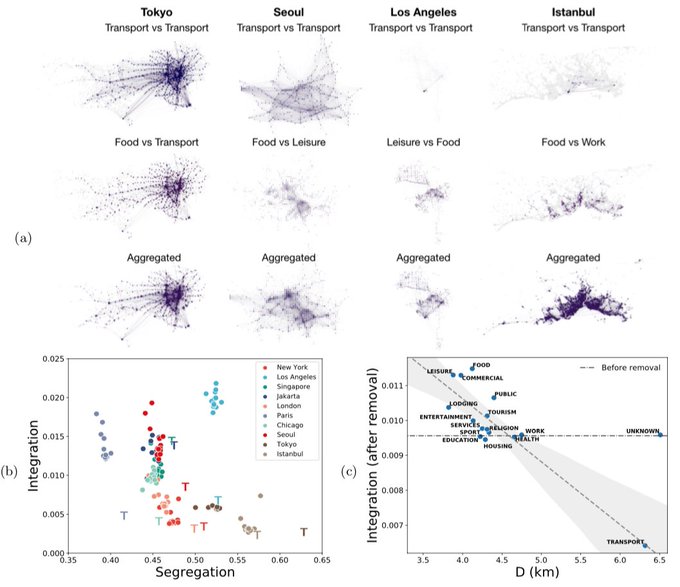
STEP 6: Conversely, the transportation layer is the one which removal more strongly influences the segregation and integration of a city, as it moves large flows and for long distances.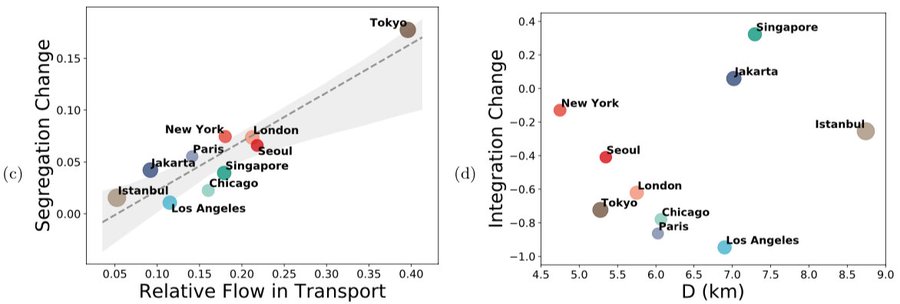
Results
Results reveal unexpected complex patterns that shed new light on urban organisation. Large cities tend to be more segregated and less integrated, while their overall topological organisation resembles that of small world networks. At the same time, the heterogeneity of flows distribution might act as a catalyst for further integrating a city. The analysis unravels how human behaviour influences, and is influenced by, the urban environment, suggesting quantitative indicators to control integration and segregation of human flows that can be used, among others, for restriction policies to adopt during emergencies and, as an interesting byproduct, allows us to characterise functional (dis)similarities of different metropolitan areas, countries, and cultures.
This work started as a submission to the Foursquare Future Cities Challenge at netmob2019, the main conference on the scientific analysis of mobile phone datasets, held on 8-10 July 2019 at Mathematical Institute, Oxford University, Oxford, UK.
